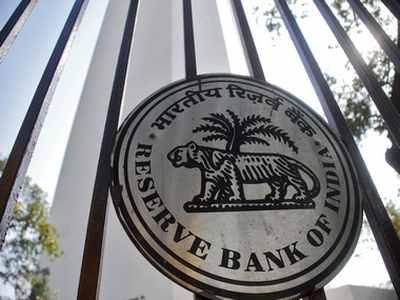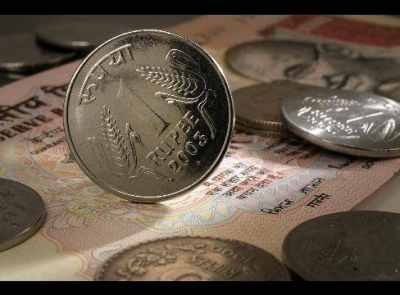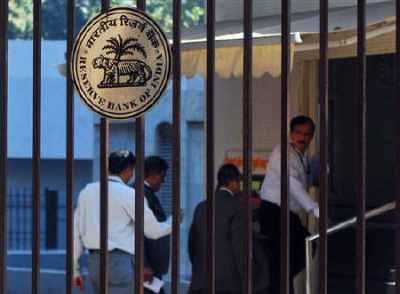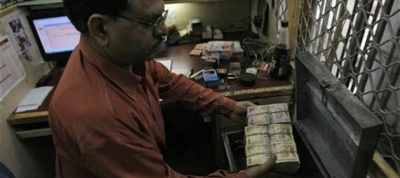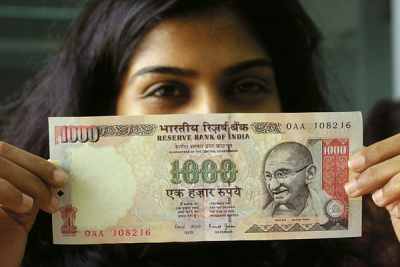 | « Back to article | Print this article |
Why RBI must set a rupee band
The rupee has stabilised a little over the past month, but it could come under pressure if oil prices continue their steady climb.
I hope that the Reserve Bank of India (RBI) has used this lull in the currency market to do some serious introspection as regards the shape it wants to give its currency strategy going forward.
In trying to gauge what the RBI is likely to do in the future, it is useful to get a fix on what led to the stability in the rupee in the first place.
The policy changes that the RBI announced – specifically, knocking out the prospect of speculation (through the cancellation and rebooking of forward contracts) as well as the deregulation of non-resident deposit rates – seem to have paid off.
For Rediff Realtime News, click here
Click NEXT to read more...Why RBI must set a rupee band
There is some evidence that the flow of non-resident deposits has surged over the last few months in response to the higher rates on these deposits that banks are now offering.
The resurgence in flows into the stock markets (largely on the back of a massive liquidity infusion by the European Central Bank) has also helped. In January alone, inflows from foreign institutional investors added up to $5 billion (Rs 25,000 crore).
But, despite this pick-up, the RBI has had to intervene by really hefty amounts. If we go by the increased deficit in money market liquidity and try to estimate the size of dollar sales by the RBI, it could work out to be well in excess of $15 billion (Rs 75,000 crore).
Going by the pattern of intervention, the central bank seems keen on defending a level of 50 to the dollar.
Click NEXT to read more...
Why RBI must set a rupee band
Some of this intervention came after (and even as) some RBI officials insisted, rather vehemently, that the rupee was left to the mercy of market forces and the most it would do was to iron out excess volatility.
The central bank is entitled to John Keynes' famous defence that one can change one's mind once the facts change. But once it changes its mind, its communication to the market should reflect this.
Otherwise, it leads to unnecessary and avoidable confusion, which can be disruptive for the markets.
Click NEXT to read more...
Why RBI must set a rupee band
In formulating a strategy, it might help to carefully define the effective peer group for the rupee. This would give the markets and the central bank the right points of reference.
The rupee tends to get lumped by default with Asian currencies ex-Japan (the cliched AXJ basket) and that is misleading.
Most of our Asian peers run current account surpluses and, thus, their vulnerability to a slowdown in capital flows is far less than the rupee's. We should really be viewing ourselves in relation to the big current account deficit emerging markets like Turkey, South Africa and Mexico.
It makes sense to construct a basket of these currencies and gauge our performance vis-a-vis this benchmark.
Click NEXT to read more...
Why RBI must set a rupee band
Second, it is important to work with some sensible assumption about how the global economy will behave over the foreseeable future and its impact on capital flows. I think we are in for periods of large capital inflows on the back of more liquidity easing by the Western central banks.
But this will be punctuated by periods of acute risk-aversion that will slow capital flows down -- or even trigger a reversal. In short, the RBI will have the occasion to intervene in the market by selling dollars as well as the opportunity to build reserves by buying dollars when there are excess flows.
If the RBI needs to intervene aggressively when there is sharp depreciation pressure, it needs to add to its stock of reserves. Reserves this fiscal year are incidentally down by $5 billion (Rs 25,000 crore).
Click NEXT to read more...
Why RBI must set a rupee band
One way to do this would be for the RBI to work with a band for the exchange rate that it would be comfortable with. (It need not necessarily share this with the market.) If the rupee-dollar pair crosses the upper end of this band (that is, depreciates beyond this), the RBI should sell dollars.
Conversely, if it falls below the band, it could buy dollars. There is no need to have a rigid band -- it could change over time as market conditions change. What is important is the principle.
From a slightly longer-term perspective, the RBI needs to have a plan in place to handle large inflows and outflows that it can predict with some degree of certainty.
Click NEXT to read more...
Why RBI must set a rupee band
For the last 18 months, roughly, our short-term debt by residual maturity has picked up sharply. This was easy to predict given that data on external debt tenors are easily available.
Thus, instead of betting on the fact that this debt would get rolled over (which did not happen as the European crisis intensified in September 2011), the RBI could have started to raise non-resident deposit rates much earlier.
The currency market is perhaps the fastest-moving market among all asset classes. It does not offer the luxury of watching a crisis break and then reacting to it.
Click NEXT to read more...
Why RBI must set a rupee band
Outflows, particularly those related to debt, can be anticipated -- and if they are large and potentially disruptive for our external balances, they need to be buffered against.
Finally, I think we need a clearer policy to handle the liquidity impact of forex market intervention. The current strain in the money markets, where the shortage of liquidity (the liquid-adjustment-facility deficit that is being bridged by the RBI lending to banks) is now three times the level that the RBI had targeted as part of its inflation-management strategy, is an example.
This could have been avoided. Any deficit that exceeds the target by a reasonable margin should be handled quickly through market operations and a reduction in the cash reserve ratio (CRR).
Click NEXT to read more...
Why RBI must set a rupee band
While it has both reduced the CRR and embarked on open-market operations, the RBI has been somewhat reticent about doing these things too aggressively. This seems to be driven by the apprehension that these steps would be misconstrued as excessive monetary easing in a situation where inflation is still a tad high for comfort.
This apprehension is misplaced. It is imperative to distinguish between a monetary effect that is the outcome of a conscious policy decision and an effect (like the current episode of tight money) that has emerged as the collateral damage of a battle being fought on another front.
These unintended effects need to, and can, be corrected quickly without the central bank worrying about its credibility as an inflation fighter.
The author is chief economist, HDFC Bank.
